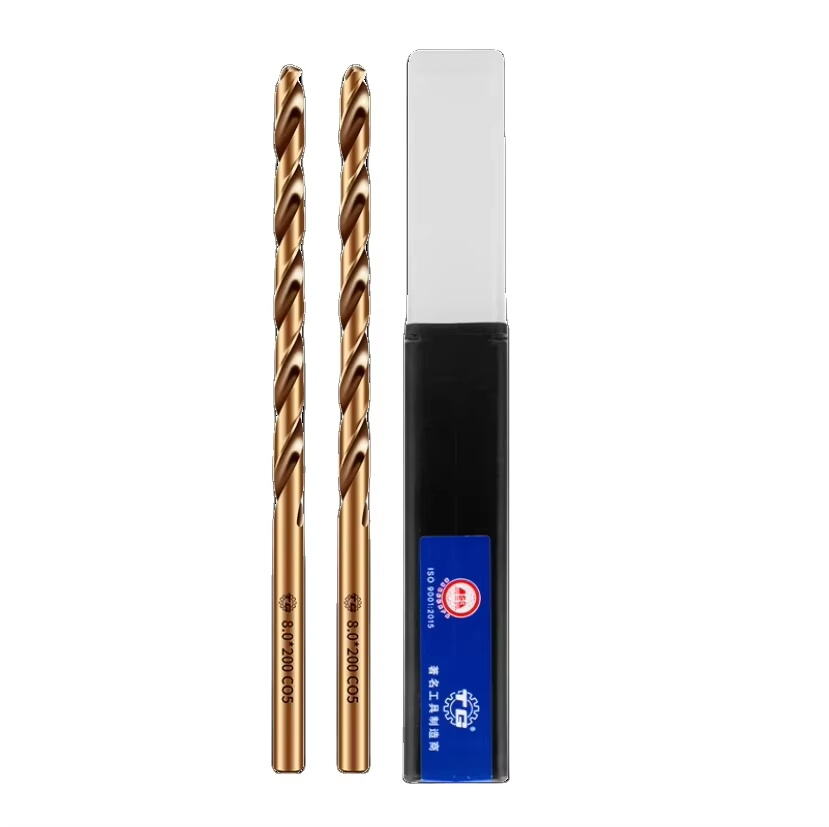Zrozumienie istotnego procesu produkcji prętów węglika spiekanego
Przygotowanie węglika spiekanego pręty szlifowane ze stali szybkotnącej stanowi kluczowy element współczesnych procesów produkcyjnych narzędzi. Te specjalistyczne materiały łączą wyjątkową twardość z niezwykłą odpornością na zużycie, co czyni je nieodzownymi w różnych zastosowaniach przemysłowych. Ścieżka od surowców po gotowe pręty wypolerowane obejmuje wiele zaawansowanych etapów, z których każdy przyczynia się do wysokiej jakości i właściwości użytkowych końcowego produktu.
Współczesny przemysł wymaga coraz bardziej precyzyjnych i wytrzymałych narzędzi, co umieszcza węgliki spiekane pręty szlifowane ze stali szybkotnącej na czołowych miejscach w innowacjach przemysłowych. Te komponenty stanowią podstawę narzędzi tnących, części odpornych na zużycenie oraz różnych zastosowań o wysokiej wydajności, gdzie materiały standardowe już nie wystarczają. Zrozumienie procesu ich przygotowania jest istotne zarówno dla producentów, jak i ostatecznych użytkowników w przemyśle narzędziowym.

Wybór surowców i obróbka wstępna
Główne składniki materiałowe
Cały proces zaczyna się od starannego wyboru surowców, głównie proszku węgliku wolframowego i kobaltu jako spoiwa. Jakość prętów węglikowych spiekanych w dużej mierze zależy od czystości i spójności tych początkowych składników. Producenci muszą pozyskiwać materiały spełniające surowe specyfikacje dotyczące rozkładu wielkości cząstek, składu chemicznego i poziomu zanieczyszczeń.
Zaawansowane metody testowania gwarantują, że do procesu produkcji trafiają wyłącznie materiały najwyższej jakości. Obejmują one analizę dyfrakcji rentgenowskiej, pomiar wielkości cząstek oraz weryfikację składu chemicznego. Każda partia przechodzi rygorystyczną kontrolę jakości, aby zapewnić spójne właściwości produktu końcowego.
Techniki mieszania i przygotowania
Proces mieszania polega na łączeniu proszku węglika wolframu z lepiszczem kobaltowym w precyzyjnych proporcjach, zazwyczaj w zakresie od 3% do 30% wagowych kobaltu. Mieszanina ta przechodzi intensywny proces technologiczny w specjalistycznych młynach, często przez kilka godzin, w celu osiągnięcia jednorodnego rozkładu i optymalnej interakcji cząstek. Dodatek organicznych lepiszczy ułatwia kolejne operacje kształtowania, jednocześnie zapewniając właściwe rozłożenie gęstości.
Kontrola temperatury i wilgotności podczas mieszania odgrywa kluczową rolę w osiąganiu spójnych wyników. Nowoczesne instalacje wykorzystują zautomatyzowane systemy do utrzymywania optymalnych warunków przez cały czas tego krytycznego etapu, ponieważ nawet niewielkie odchylenia mogą wpływać na końcowe właściwości prętów węglika spiekanego.
Procesy Formowania i Spiekania
Metody Formowania i Kształtowania
Gdy mieszanina proszkowa osiągnie pożądaną konsystencję, poddawana jest procesom formowania, w wyniku których powstaje podstawowy kształt pręta. Zwykle polega to na prasowaniu mieszaniny w prasach hydraulicznych lub mechanicznych w ściśle kontrolowanych warunkach ciśnienia. Proces formowania musi zagwarantować jednolitą gęstość na całej długości pręta, aby zapobiec powstawaniu wad w gotowym produkcie.
Zaawansowane techniki formowania mogą obejmować prasowanie izostatyczne, które polega na działaniu ciśnieniem równomiernie ze wszystkich kierunków, aby osiągnąć optymalne rozłożenie gęstości. Ta metoda pomaga zminimalizować naprężenia wewnętrzne oraz potencjalne punkty osłabienia w prętach węglika spiekanego.
Spiekanie i Zagęszczanie
Proces spiekania przekształca uformowany proszek w solidny węglik spiekany poprzez starannie kontrolowane cykle ogrzewania. Ten kluczowy etap zachodzi w piecach próżniowych w temperaturach zwykle zawartych pomiędzy 1350°C a 1500°C. Podczas spiekania, kobaltowy spoiwo topnieje i sprzyja powstawaniu silnych wiązań pomiędzy cząsteczkami węglika wolframowego.
Precyzyjna kontrola temperatury oraz zarządzanie atmosferą w trakcie spiekania mają bezpośredni wpływ na właściwości końcowe prętów węglikowych. Nowoczesne piece wykorzystują zaawansowane systemy monitorujące, aby utrzymać optymalne warunki przez cały cykl, zapewniając spójność wyników w całych partiach produkcyjnych.
Operacje wykańczające i kontrola jakości
Szlifowanie i obróbka powierzchni
Po spiekanie pręty są szlifowane z dużą precyzją, aby osiągnąć wymagane wymiary oraz jakość powierzchni. Do tego procesu niezbędne są szlifierki diamentowe i specjalistyczne ciecze chłodzące, ponieważ ekstremalna twardość staliwtu wymaga zastosowania specyficznych narzędzi i technik. Proces szlifowania należy dokładnie kontrolować, aby zapobiec uszkodzeniom powierzchni czy powstawaniu naprężeń wewnętrznych.
Opcje obróbki powierzchni mogą obejmować nanoszenie specjalistycznych powłok lub poddawanie powierzchni specyficznym zabiegom, mającym na celu zwiększenie odporności na zużycie lub modyfikację współczynnika tarcia. Dobór tych zabiegów zależy od planowanego zastosowania prętów ze staliwitu oraz od konkretnych wymagań klienta.
Procedury inspekcji i testowania
Zabezpieczenia jakości obejmują weryfikację wymiarów, badania twardości oraz analizę mikrostruktury. Zaawansowane urządzenia kontrolne, takie jak mikroskopy optyczne i elektronowe, pomagają wykrywać wszelkie wady powierzchniowe lub wewnętrzne. Producent wykonuje również testy odporności na zużycie oraz analizę składu chemicznego, aby zagwarantować zgodność z normami.
Systemy dokumentacji i śledzenia pozwalają monitorować każdy partii węglika spiekanego na całym etapie produkcji, umożliwiając szybkie wykrycie i rozwiązanie wszelkich problemów jakościowych.
Często zadawane pytania
Co decyduje o wyborze gatunku węglika spiekanego?
Wybór gatunku zależy przede wszystkim od zastosowania, przy uwzględnieniu takich czynników jak wymagana twardość, odporność na zużycie i odporność na pękanie. Zawartość kobaltu oraz wielkość ziaren węglika są kluczowymi parametrami wpływającymi na te właściwości i pomagającymi określić najbardziej odpowiedni gatunek do konkretnego zastosowania w narzędziowni.
Jak długo trwają zwykle cementowane pręty do gruntu z węglanu?
Żywotność różni się znacząco w zależności od warunków zastosowania, w tym prędkości cięcia, szybkości podawania i materiału obrabiarków. W optymalnych warunkach i prawidłowym użytkowaniu cementy z węglika mogą trwać kilkakrotnie dłużej niż konwencjonalne alternatywy stalowe, często zapewniając setki godzin ciągłej pracy.
Jakie wymagania dotyczące przechowywania sztab gruntowych z cementu węglowodorowego?
Właściwe przechowywanie wymaga utrzymania stabilnych warunków temperatury i wilgotności, aby zapobiec utlenianiu i zachować integralność materiału. Pręty powinny być przechowywane w opakowaniach ochronnych, z dala od ostrych chemikaliów i ekstremalnych warunków środowiskowych, oraz należy z nimi postępować ostrożnie, aby zapobiec rozpadom lub uszkodzeniu.


